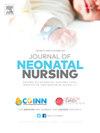父母在新生儿重症监护室和家中对双胞胎包被的体验和看法--一项定性描述性研究
Q2 Nursing
引用次数: 0
摘要
目的和目标探讨澳大利亚新生儿重症监护病房和家庭环境中双胞胎父母对双胞胎同床分娩的看法和经验。设计采用定性描述设计,并使用反思性主题分析法。方法通过对曾入住新生儿重症监护病房(NICU)并出院回家的双胞胎父母进行十次个人半结构式访谈收集数据。本文按照 COREQ 指南和核对表进行报告。结果确定了四个主题,涵盖怀孕、早产、入住新生儿重症监护室和回家的经历。纽带 "侧重于父母对双胞胎纽带重要性的看法以及使用双胞胎同床来促进纽带的重要性;"影响 "探讨了信息、互联网和社区如何影响双胞胎同床的看法和决定;"影响 "NICU/SCN 和分离对同床的决定和经历的影响;"应对 "侧重于双胞胎如何在睡眠安排的决定中承担工作量。结论这项研究表明,双胞胎家庭在决定将双胞胎分开或同床时,不仅仅是简单地遵循指南,甚至也不是以医院的做法为榜样。这一决定是多因素的,但最终都是围绕着促进双胞胎之间的纽带和关系,以及哪种方法能最好地支持双胞胎的睡眠/喂养习惯而做出的。对医疗行业和/或患者护理的意义多胞胎家庭在住院期间将受益于更好的指导和建议,这些指导和建议将考虑到他们的独特需求。医护人员必须考虑到双胞胎父母在应对双胞胎工作量的情况下就睡眠安排所做的决定。本文章由计算机程序翻译,如有差异,请以英文原文为准。
Parent experiences and perceptions of twin cobedding in the NICU and home - A qualitative descriptive study
Aims and objectives
To explore parents of twins’ perceptions of, and experience with, twin cobedding across Neonatal Intensive Care Units and home settings in Australia.
Background
Twin cobedding has been used by many parents over the decades however, practices vary globally as research surrounding benefit and risk has not been definitive enough to inform guidelines. There is a significant gap in the literature exploring what is involved in parental preferences, experiences, and decisions related to twin cobedding.
Design
A qualitative descriptive design, using reflexive thematic analysis.
Methods
Data were collected through ten individual, semi-structured interviews with parents of twins who had been admitted to a Neonatal Intensive Care Unit (NICU) and discharged home. This paper is reported following the COREQ guidelines and checklist.
Results
Four themes were identified which spanned the experience of pregnancy, premature birth, NICU admission, and home. ‘Bonding’ focused on parents' perceptions of the importance of the twin bond and the use of twin cobedding to facilitate it; ‘Influence’ explored how information, the internet, and community influenced twin cobedding perceptions and decisions; ‘Impact’ of the NICU/SCN and separation on cobedding decisions and experiences; and ‘Coping’ focused on how the twin workload on decisions regarding sleeping arrangements.
Conclusions
This study identifies that decisions made by twin families to separate or cobed their twins, go beyond simply following guidelines, or even role-modelling hospital practices. The decision is multi-factorial, yet ultimately centers around facilitating a bond, the relationship between their twins, and which method best supports their twins’ sleep/feed routine.
Implications for the profession and/or patient care
Families of multiples would benefit from improved guidance and advice whilst in hospital that considers their unique needs. It is important for healthcare workers to consider the decisions twin parents make surrounding sleeping arrangements within the context of coping with the twin workload.
Patient or public contribution
No patient or public contribution.
求助全文
通过发布文献求助,成功后即可免费获取论文全文。
去求助
来源期刊

Journal of Neonatal Nursing
Nursing-Pediatrics
CiteScore
2.00
自引率
0.00%
发文量
143
期刊介绍:
Aims & Scope: This is the practical, bimonthly, research-based journal for all professionals concerned with the care of neonates and their families, both in hospital and the community. It aims to support the development of the essential practice, management, education and health promotion skills required by these professionals. The JNN will provide a forum for the exchange of ideas and information between the range of professionals working in this field; promote cooperation between these professionals; facilitate partnership care with families; provide information and informed opinion; promote innovation and change in the care of neonates and their families; and provide an education resource for this important rapidly developing field.
 求助内容:
求助内容: 应助结果提醒方式:
应助结果提醒方式:


